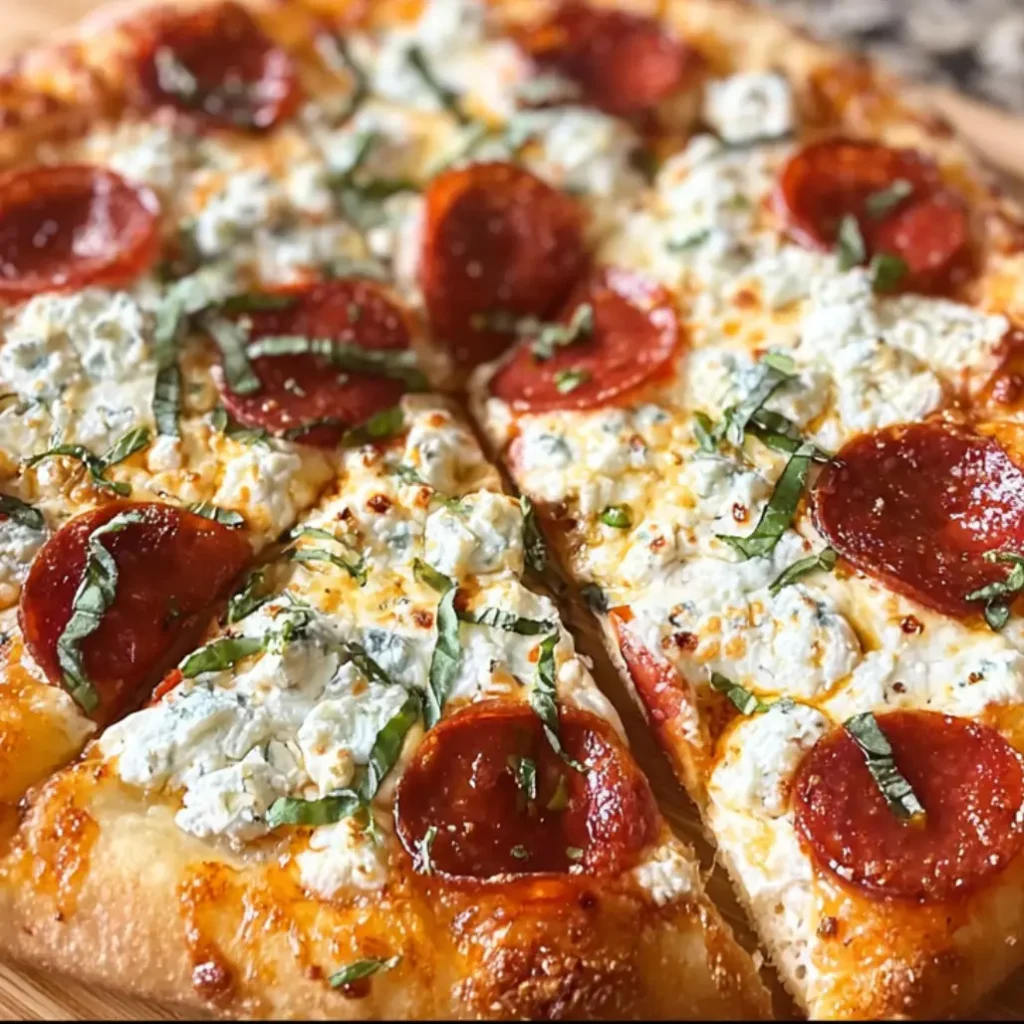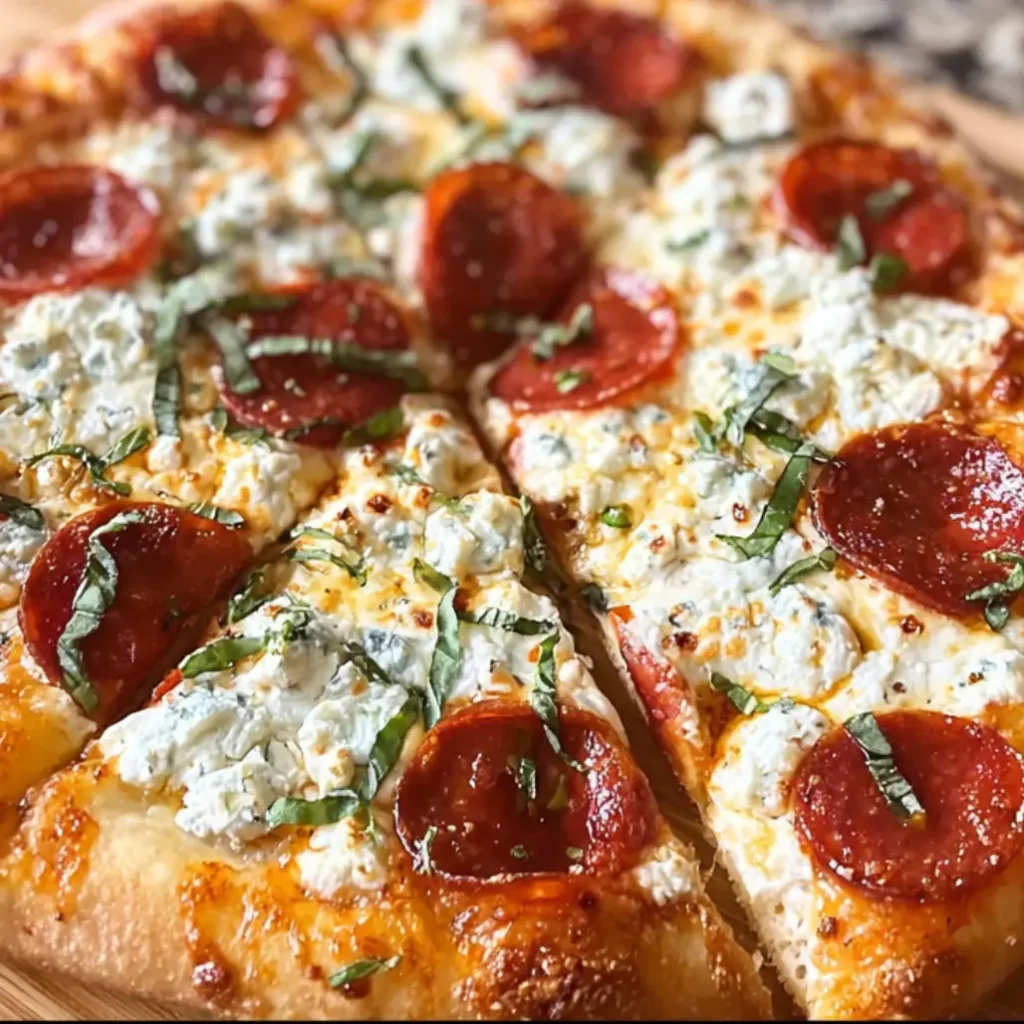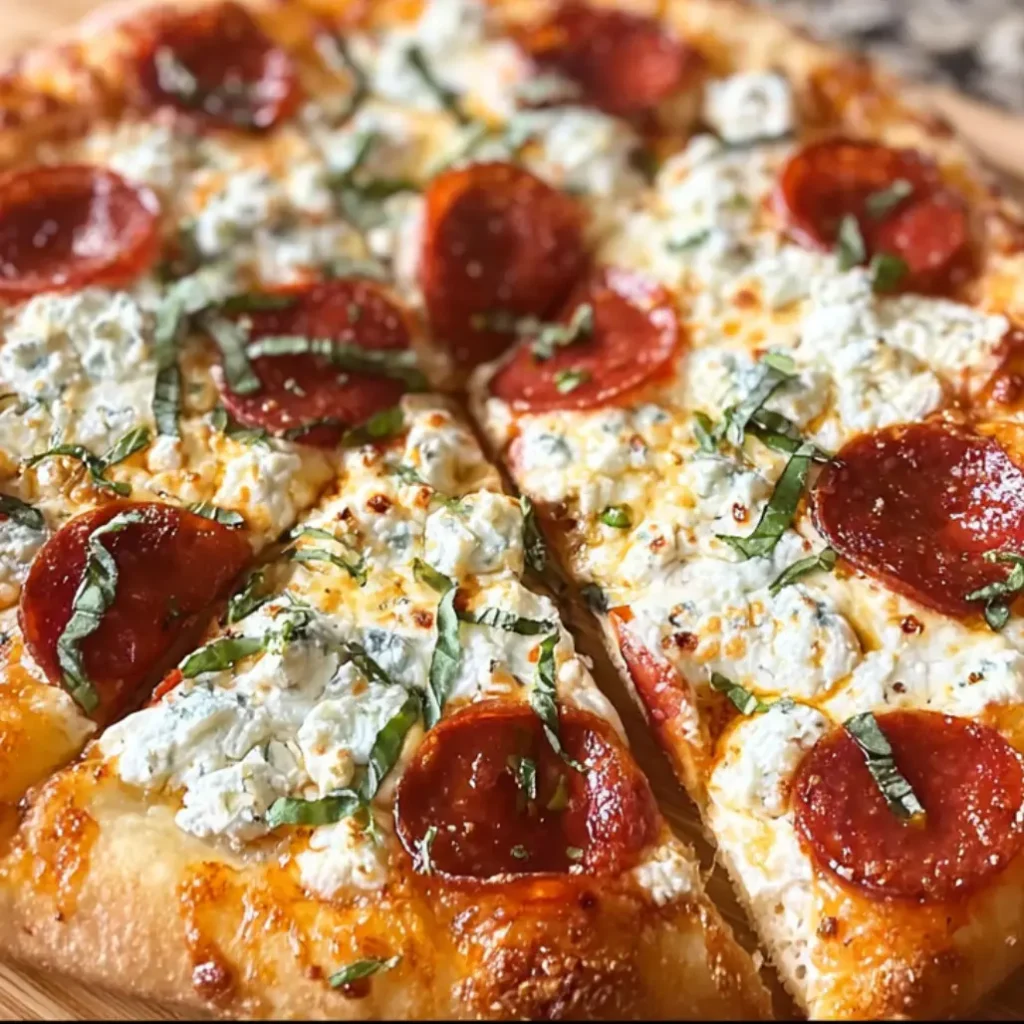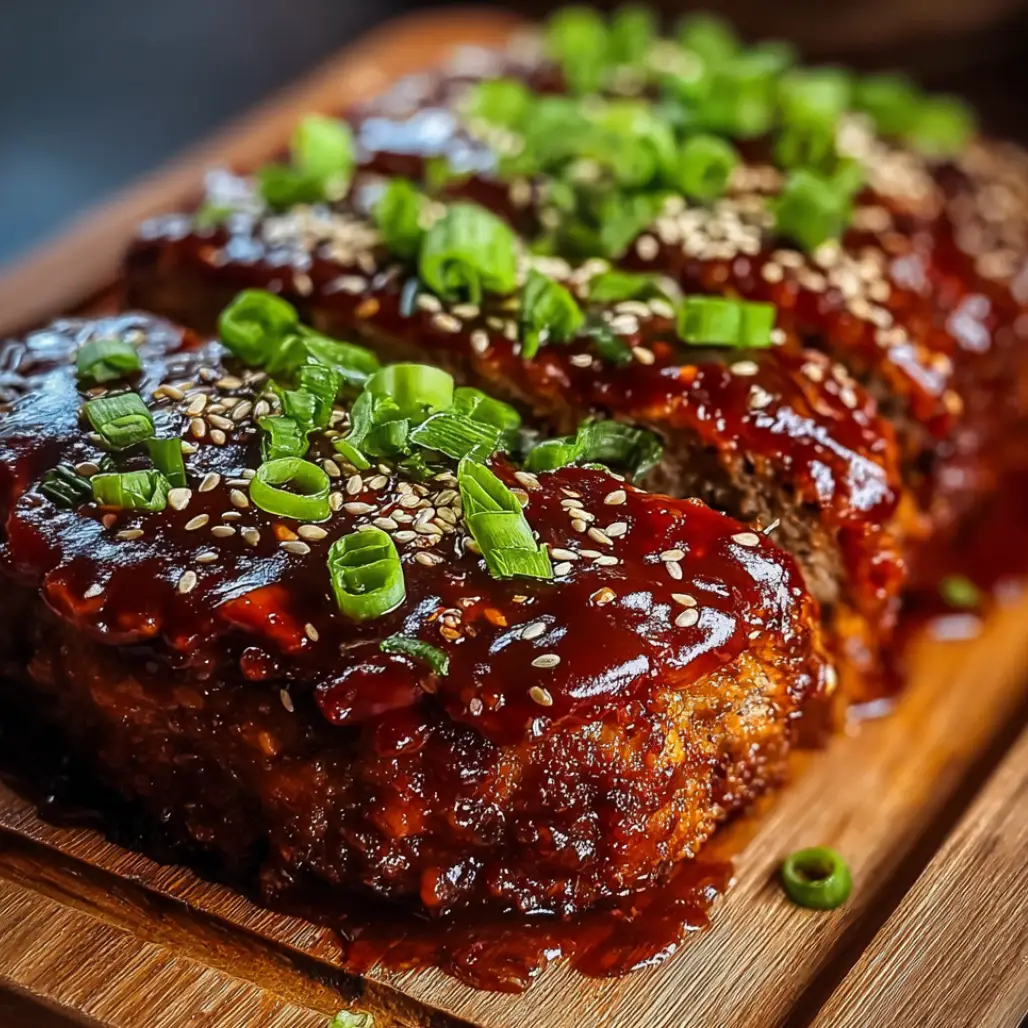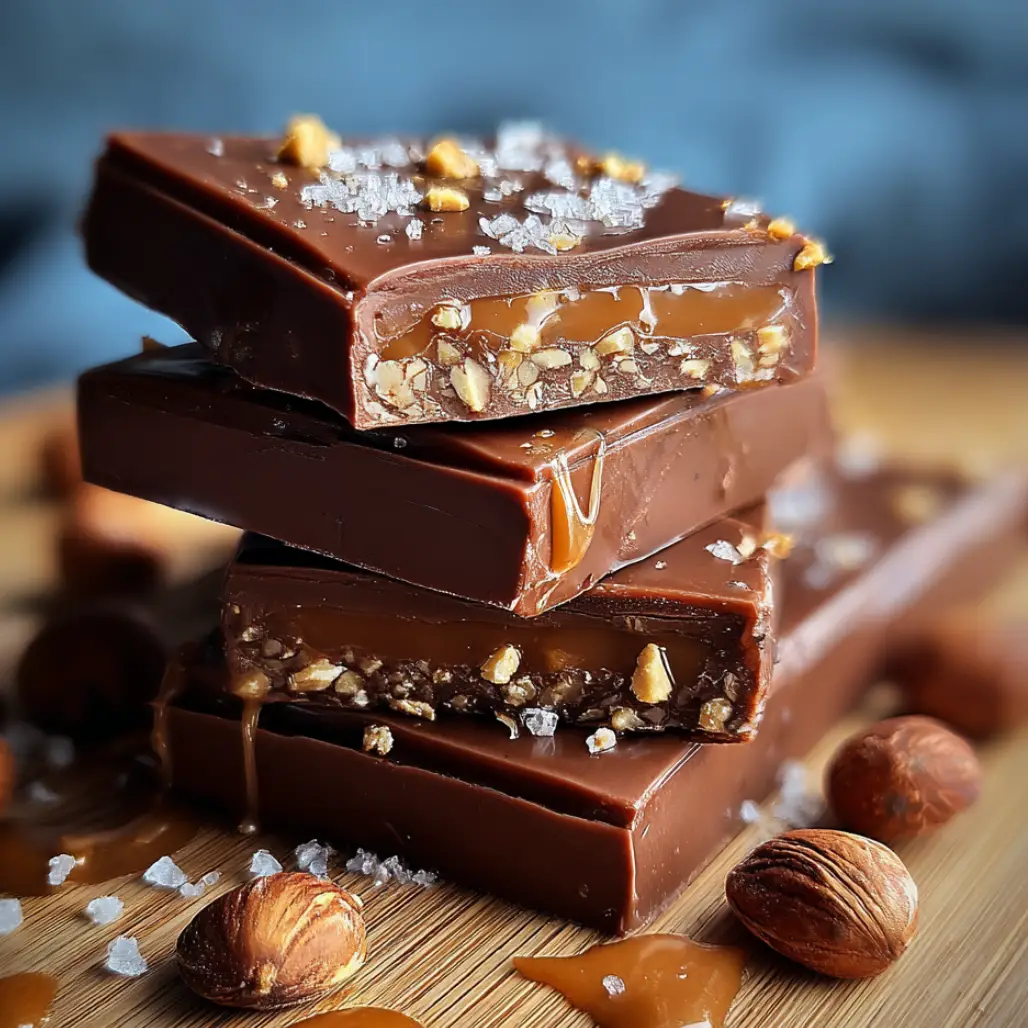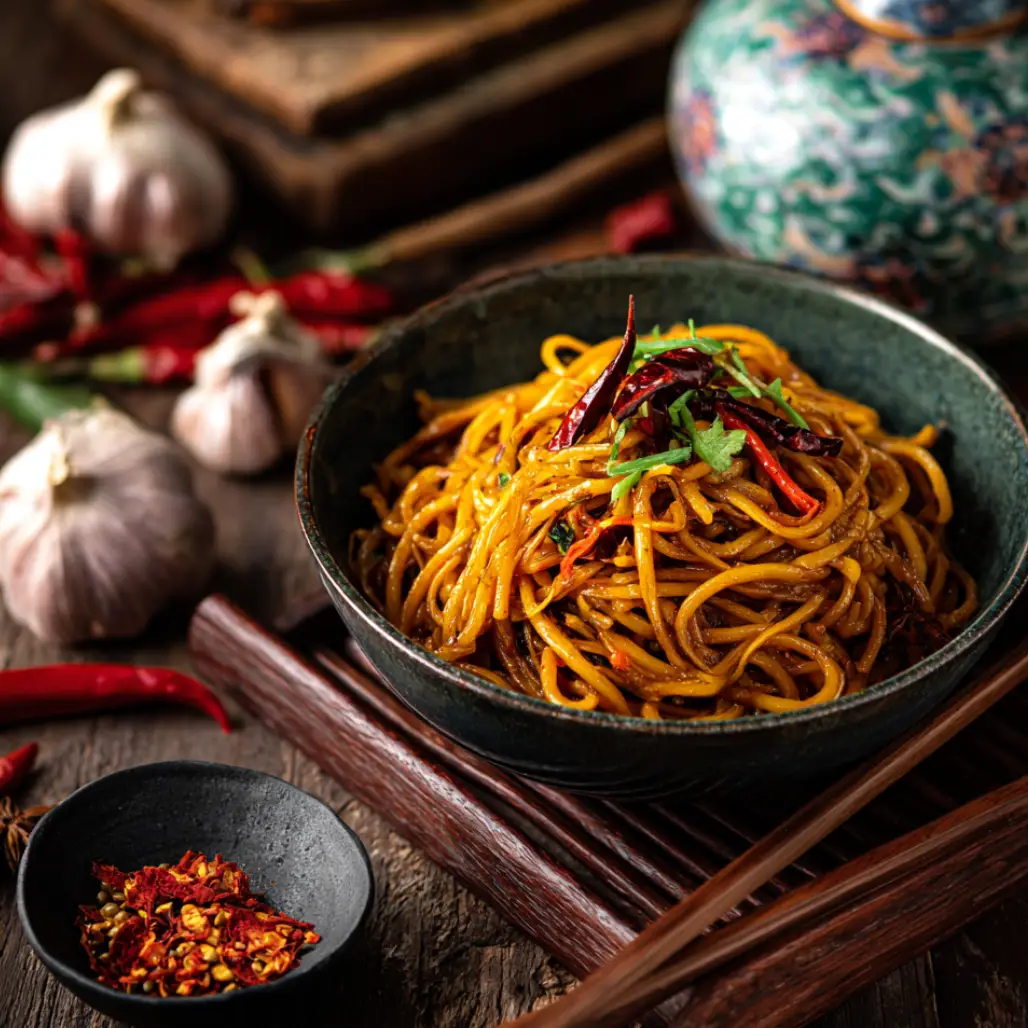| Prep Time: 20 minutes | Cook Time: 12 minutes | Total Time: 32 minutes | Serves: 4 |
Transform your pizza night into an extraordinary culinary experience with this exceptional hot honey pepperoni ricotta pizza that masterfully balances sweet, spicy, and savory flavors in perfect harmony because this innovative recipe elevates traditional pizza-making through the strategic combination of creamy ricotta, spicy pepperoni, and the distinctive kick of hot honey. This sophisticated preparation represents the evolution of American pizza culture, where classic comfort food meets contemporary flavor innovation to create something truly memorable that satisfies both traditionalists and adventurous food enthusiasts seeking new taste experiences that push culinary boundaries.
Why This Pizza Revolution Captivates Food Lovers Everywhere
The extraordinary appeal of this preparation lies in its ability to create complex flavor layers that unfold gradually with each bite because the interplay between the cooling creaminess of ricotta, the robust saltiness of pepperoni, and the sweet heat of honey creates a sensory experience that transcends ordinary pizza expectations. Unlike conventional pizza varieties that rely on single-note flavor profiles, this hot honey pepperoni ricotta pizza demonstrates how thoughtful ingredient combinations can transform familiar comfort food into sophisticated dining experiences that rival restaurant-quality creations.
The cultural significance extends beyond mere taste because this recipe represents the beautiful fusion of traditional Italian techniques with contemporary American innovation, showcasing how food evolves through creative experimentation while respecting foundational principles. This approach reflects the dynamic nature of modern cuisine, where chefs and home cooks alike embrace bold flavor combinations that challenge conventional expectations while maintaining the essential comfort and satisfaction that makes pizza universally beloved across diverse communities and age groups.
Essential Ingredients for Exceptional Flavor Development
1 pound pizza dough, preferably homemade or high-quality store-bought variety 1/2 cup pizza sauce, either marinara or specialized pizza sauce for optimal flavor 8 ounces fresh mozzarella cheese, torn into irregular pieces for rustic appeal 1 cup whole milk ricotta cheese, drained if particularly wet for better texture 4 ounces sliced pepperoni, preferably natural casing for superior taste and texture 1/4 cup hot honey, store-bought or homemade for customizable heat levels 2 tablespoons fresh basil leaves, chiffonade cut for elegant presentation 2 tablespoons grated Parmesan cheese, freshly grated for optimal flavor impact 1 tablespoon extra virgin olive oil, for drizzling and flavor enhancement 1/2 teaspoon red pepper flakes, optional for additional heat and visual appeal 1/4 teaspoon garlic powder, for subtle aromatic depth and complexity Coarse sea salt, for finishing and flavor enhancement All-purpose flour, for dusting work surfaces and preventing sticking
The Art of Creating Perfect Pizza Harmony
Mastering this dish requires understanding how different textures and temperatures work together to create optimal eating experiences because successful hot honey pepperoni ricotta pizza depends on achieving the right balance between crispy crust, melted cheese, and properly distributed toppings that complement rather than compete with each other. The key lies in respecting the individual characteristics of each ingredient while encouraging their harmonious integration through proper preparation and cooking techniques.
The technique involves more than simply assembling toppings because timing, temperature control, and strategic placement all contribute to the final result that distinguishes exceptional pizza from ordinary attempts. This means understanding how ricotta behaves under high heat, how pepperoni renders its oils, and how honey caramelizes to create the complex flavor profile that makes this preparation so memorable and satisfying.
Step-by-Step Instructions for Hot Honey Pepperoni Ricotta Pizza Excellence
Preparing the Foundation
Begin by removing your pizza dough from refrigeration 30-45 minutes before use to allow it to come to room temperature because cold dough resists stretching and can tear easily during the shaping process required for proper hot honey pepperoni ricotta pizza preparation. Preheat your oven to its highest setting, typically 500-550°F, and if using a pizza stone or steel, place it in the oven during preheating to ensure optimal heat transfer and crust development.
Professional Tip: Dust your work surface generously with flour and keep additional flour nearby for dusting as needed to prevent sticking during the dough stretching process.
Key Points: Room temperature dough stretches more easily and creates better texture, while proper oven preheating ensures optimal cooking conditions for achieving the crispy crust that defines exceptional pizza.
Shaping the Perfect Canvas
Gently stretch the room temperature dough using your hands rather than a rolling pin because hand-stretching preserves the air bubbles that create the characteristic texture and chewiness essential to quality pizza crust. Work from the center outward, allowing gravity to help stretch the dough naturally while maintaining even thickness throughout, creating a canvas approximately 12-14 inches in diameter for optimal topping distribution and cooking results.
Professional Tip: If the dough springs back during stretching, let it rest for 10-15 minutes before continuing, as this allows the gluten to relax and makes shaping easier.
Key Points: Hand-stretching preserves dough structure and creates better texture than rolling, while even thickness ensures uniform cooking and prevents soggy or burnt spots in your finished pizza.
Building the Flavor Foundation
Spread the pizza sauce evenly across the stretched dough, leaving a 1-inch border around the edges for crust formation because proper sauce distribution ensures every bite contains balanced flavors while the border creates the characteristic puffy edge that defines artisanal pizza. Use the back of a spoon to create thin, even coverage that won’t overwhelm the other ingredients or create soggy spots that could compromise crust integrity.
Professional Tip: Warm the sauce slightly before application to prevent shocking the dough and to ensure easier spreading that won’t tear the delicate surface.
Key Points: Even sauce distribution prevents soggy spots and ensures balanced flavors, while the border allows for proper crust development that provides textural contrast in the finished dish.
Layering the Cheese Components
Distribute the torn mozzarella pieces evenly across the sauced surface, then add dollops of ricotta cheese using a spoon or piping bag because this layering technique ensures proper melting and prevents the ricotta from becoming too watery during the cooking process. The mozzarella provides the traditional stretchy, melty quality while the ricotta adds creamy richness and cooling contrast that balances the spicy elements in this hot honey pepperoni ricotta pizza.
Professional Tip: Pat the ricotta with paper towels before application if it seems particularly wet, as excess moisture can create steam that prevents proper browning and crisping.
Key Points: Proper cheese distribution ensures even melting and prevents burning, while controlling ricotta moisture prevents soggy results that could compromise the overall texture and eating experience.
Adding the Pepperoni Elements
Arrange the pepperoni slices evenly across the cheese layers, allowing some overlap but ensuring good distribution because the rendered oils from the pepperoni during cooking will create additional flavor throughout the pizza while the meat provides the essential savory and spicy elements. Choose high-quality pepperoni with natural casings when possible, as these varieties offer superior flavor and the characteristic cupping that creates attractive presentation and concentrated flavor pockets.
Professional Tip: Slightly overlap pepperoni slices rather than spacing them too far apart, as the meat shrinks during cooking and proper coverage ensures flavor in every bite.
Key Points: Even pepperoni distribution ensures consistent flavor throughout the pizza, while quality selection impacts both taste and visual appeal of the finished product.
The Final Baking Process
Transfer the assembled pizza to your preheated oven, using a pizza peel or inverted baking sheet if working with a stone, and bake for 10-12 minutes until the crust is golden brown and the cheese is bubbly and beginning to develop brown spots because these visual cues indicate proper cooking and flavor development. Watch carefully during the final minutes to prevent burning while ensuring complete cooking of the dough and proper cheese melting.
Professional Tip: Rotate the pizza halfway through baking if your oven has hot spots to ensure even browning and cooking throughout the entire surface area.
Key Points: Visual cues are more reliable than strict timing for determining doneness, while rotation prevents uneven cooking that could result in burnt or undercooked sections.
Finishing with Hot Honey and Fresh Elements
Remove the cooked pizza from the oven and immediately drizzle with hot honey while the surface is still hot because the heat helps the honey spread more evenly and penetrate slightly into the cheese for better integration. Add fresh basil leaves, grated Parmesan, and a light drizzle of olive oil, then finish with a pinch of sea salt and red pepper flakes if desired for the complete hot honey pepperoni ricotta pizza experience.
Professional Tip: Allow the pizza to cool for 2-3 minutes before slicing to prevent the cheese from sliding off and to allow the flavors to settle and integrate properly.
Key Points: Immediate hot honey application ensures proper distribution and integration, while brief cooling allows for clean slicing and optimal texture in the finished product.
Professional Tips for Consistent Success
Temperature control throughout the process significantly impacts the final quality because dough, sauce, and cheese all respond differently to heat application, requiring careful management to achieve optimal results. Invest in an oven thermometer to ensure accurate temperature readings, and consider using a pizza stone or steel to improve heat retention and transfer that creates superior crust texture and browning.
Ingredient quality directly affects the final outcome, particularly with the pepperoni and ricotta that provide primary flavor components, so choose the best available options within your budget. Fresh mozzarella creates superior melting qualities compared to pre-shredded varieties, while quality pepperoni with natural casings offers better flavor and texture than mass-produced alternatives that may contain excessive fillers or preservatives.
Creative Variations and Seasonal Adaptations
Transform this base recipe by incorporating seasonal vegetables such as roasted red peppers, caramelized onions, or fresh arugula for additional color, texture, and nutritional value that complements the core flavor profile. Consider protein variations using Italian sausage, prosciutto, or even grilled chicken for different taste experiences while maintaining the essential sweet-spicy-creamy balance that defines this preparation.
Spice level adjustments allow customization for different palates, from reducing the hot honey quantity for milder versions to adding fresh jalapeños or using spicier pepperoni varieties for those who prefer more intense heat. Cheese variations such as fontina, provolone, or even goat cheese can create unique flavor profiles while maintaining the creamy element that balances the spicy components.
Perfect Pairing Suggestions for Enhanced Dining
This rich, flavorful pizza pairs beautifully with crisp white wines, light red wines, or craft beers that complement rather than compete with the complex flavor profile, and you can explore excellent beverage options in our refreshing beverages collection. Create complete meal experiences by serving alongside fresh salads from our salads selection that provide cooling contrast to the rich, warming flavors of the pizza.
The preparation also works well as part of larger entertaining spreads featuring items from our snacks appetizers category, allowing guests to enjoy various flavor profiles throughout the meal while maintaining cohesive dining experiences that celebrate both comfort and sophistication.
Discover More Culinary Adventures
Expand your pizza-making expertise by exploring our comprehensive breakfast favorites collection, where you’ll find additional techniques for working with dough and cheese that enhance your overall cooking skills. These complementary recipes showcase similar principles of flavor balance and technique that translate beautifully to other preparations requiring attention to timing and temperature control.
For those interested in developing complete entertaining menus, our perfect sides section offers creative accompaniments that pair beautifully with pizza while providing varied textures and flavors that create memorable dining experiences for family and friends.
Optimal Storage and Reheating Guidelines
Store leftover pizza slices in airtight containers in the refrigerator for up to three days, though optimal flavor and texture occur within the first 24 hours when the crust maintains some of its original crispness and the flavors remain bright and well-integrated. Avoid storing hot pizza immediately, as trapped steam can make the crust soggy and affect the overall eating experience.
Reheat refrigerated slices in a preheated 350°F oven for 5-7 minutes to restore crispness to the crust while warming the toppings thoroughly, or use a skillet over medium heat with a lid to create steam that warms the toppings while maintaining bottom crust crispness. Avoid microwave reheating when possible, as this method tends to create chewy, unappetizing textures that don’t represent the dish at its best.
The Science Behind Perfect Pizza Creation
Understanding the chemistry of pizza making reveals why certain techniques produce superior results because the interaction between yeast, gluten, heat, and moisture creates the characteristic texture and flavor that defines quality pizza. The Maillard reaction during baking creates the golden-brown color and complex flavors in the crust, while proper cheese melting requires specific temperature ranges that maintain texture without burning.
The hot honey component undergoes caramelization that intensifies its sweetness while the heat volatilizes aromatic compounds that enhance the overall sensory experience. This scientific understanding helps explain why timing and temperature control are so crucial for achieving consistent results that showcase all the elements at their best.
Troubleshooting Common Preparation Challenges
When the crust becomes soggy or fails to brown properly, the issue typically stems from too much sauce, wet toppings, or insufficient oven temperature, all easily corrected through proper technique and temperature management. If this occurs, reduce sauce quantity, drain wet ingredients more thoroughly, and ensure your oven reaches maximum temperature before baking the next pizza.
Prevent cheese burning while ensuring proper melting by positioning the oven rack in the center position rather than too close to the heating elements, and monitor closely during the final minutes of baking. If the cheese browns too quickly before the crust cooks through, reduce oven temperature slightly and extend cooking time to achieve proper doneness throughout all components.
Additional Inspirations for Pizza Excellence
Enhance your understanding of flavor pairing and presentation by exploring our flavored dips marinades collection, where similar attention to balance and complexity creates memorable accompaniments for various dishes. The skills developed through perfecting this hot honey pepperoni ricotta pizza translate beautifully to other preparations that require careful attention to ingredient interaction and timing.
Consider incorporating elements from our savory sides selection when planning complete Italian-inspired meals that showcase the versatility of these flavor combinations across multiple courses and preparation methods.
Conclusion
This hot honey pepperoni ricotta pizza represents more than just another recipe because it embodies the creative spirit of modern cooking where traditional techniques meet innovative flavor combinations to create something entirely new and exciting. The preparation demonstrates how understanding ingredient characteristics and proper technique can elevate familiar concepts into extraordinary experiences that satisfy both comfort food cravings and sophisticated taste preferences.
The enduring appeal lies in its perfect balance of familiar and surprising elements that create lasting food memories while proving that exceptional cooking emerges from thoughtful ingredient selection, proper technique, and willingness to explore new flavor territories. Whether served at casual family dinners or special entertaining occasions, this preparation consistently delivers the kind of memorable eating experience that brings people together around shared appreciation for creative, delicious food that honors both tradition and innovation.

